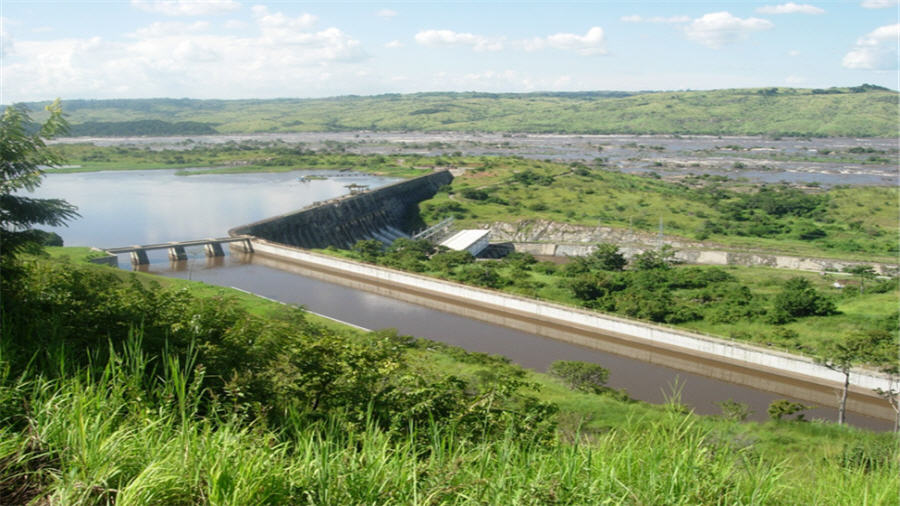
The Democratic Republic of Congo gave two groups of investors a four-week deadline to submit a joint proposal on the development of the multi-billion dollar Inga 3 hydropower plant.
The government signed an accord with Chinese and Spanish consortia this week to advance the 11,000-megawatt facility, the first time it’s formally appointed entities to draw up plans to develop Inga 3 since the project was announced about a decade ago. The Chinese group includes China Three Gorges Corp. and State Grid International Development Ltd., while the Spanish partners comprise Actividades de Construccion y Servicios SA and AEE Power Holdings SL.
By Nov. 10, the Three Gorges Corp, AEE Power Holdings SL and Actividades de Construccion y Servicios SA must hand over a joint proposal that includes a financial model and timeline
“There have been tenders, lots of meetings, lots of promotional activities, but it’s only today that we have for the first time a legal document,” Bruno Kapandji, director of the Agency for the Development and Promotion of the Grand Inga Project, or ADPI, told reporters after a signing ceremony Oct. 16.
The accord calls for the creation of a single consortium by the two groups, which have been cooperating since last year on an “optimized bid” on how to bring the project to fruition, he said. Multiple phases and several contracts still need to be completed before construction can begin.
The government will then negotiate an “exclusive collaboration contract” with the single consortium that will enable the co-developers to consider themselves the project’s “prospective concessionaires,” it states.
In the “exclusive collaboration phase,” the Chinese and Spanish investors have undertaken to finance extra technical studies, as well as assessments of environmental and social impacts, to update those done for an earlier 4,800-megawatt version of the project. They will also attract lenders to finance the facility, which could cost as much as $18 billion, and help Congo find buyers of the electricity elsewhere in Africa. Finally, the government will grant the special-purpose vehicle formed by the groups a concession to construct and manage Inga 3.
The government is billing Inga 3 as the first phase of a mega project eventually intended to harness as much as 40,000 megawatts of hydroelectric capacity concentrated in a stretch of the Congo River in the west of the country. In 2013, South Africa signed a treaty with Congo committing the nation to buy 2,500 megawatts, which at the time was more than half of the facility’s projected output.
Inga 3’s capacity has increased because of growth in demand in Congo, where both the population and the mining industry are starved of electricity, and the rest of Africa, according to a news release issued after the ceremony. The original, smaller project also wasn’t financially feasible, according to a presentation the groups gave to the African Development Bank in July.
South Africa “has recently expressed willingness to increase its commitment” to 5,000 megawatts, according to the presentation. Inga 3’s “first financial closure is based on the demand” of South Africa, which means the country “needs to be participating in the project from now on,” it said. The groups project Congo’s national power utility and mining companies will consume 2,500-3,000 megawatts.
There will be a second financial closure when other African off-takers have been identified and power-transmission plans put in place. The presentation lists Nigeria and Angola as among “several interested off-takers” involved in ongoing talks.
Congo’s business climate is challenging because of a lack of roads and other infrastructure, and Inga 3 has its detractors. The World Bank canceled its $73 million technical assistance in 2016 after the ADPI was set up within the presidency, rather than as an autonomous government agency.
In September, 40 Congolese non-governmental organizations called for a moratorium on Inga 3, calling for more comprehensive assessments of the social and environmental impact. Negotiations so far have been “opaque and non-participative” and “under the direct control of” Kabila, they said.
Inga 3 will cost between $13.9 billion and $17.9 billion.
Last year, U.S.-based activist group International Rivers said the plant “risks ballooning the DRC’s debt burden.” Kapandji has dismissed such concerns, saying it’s the concession company that will “gather the money and execute the project.”
Congo’s government will have a 5 percent free stake in the SPV, which holds the concession, according to the presentation. The joint consortium will control the company, while other investors will be brought in to hold 19 percent of the shares.
Eighty percent of Inga 3 will be financed through debt and the rest through equity, according to the minutes. International finance institutions, including the African Development Bank, and export-credit agencies could provide most of the debt financing, with commercial banks picking up the rest, the presentation stated.
In even the most optimistic forecasts, Inga 3 won’t be operational until the late 2020s. Following financial close and the award of the concession contract, constructing the plant will take as long as eight years, according to the presentation.
(By William Clowes)